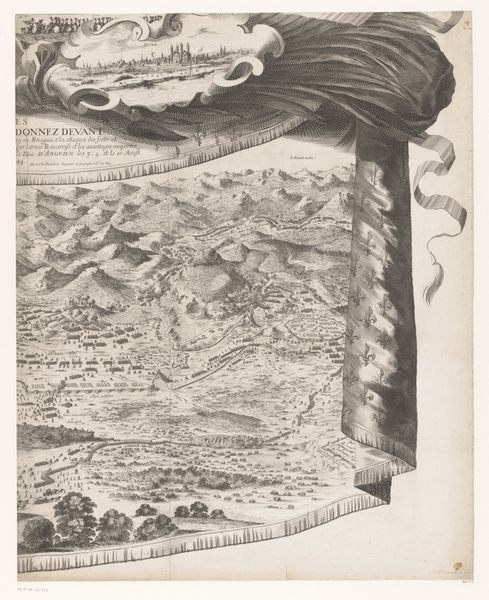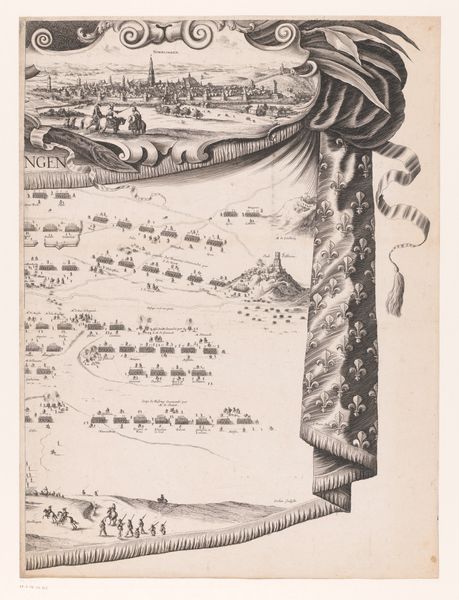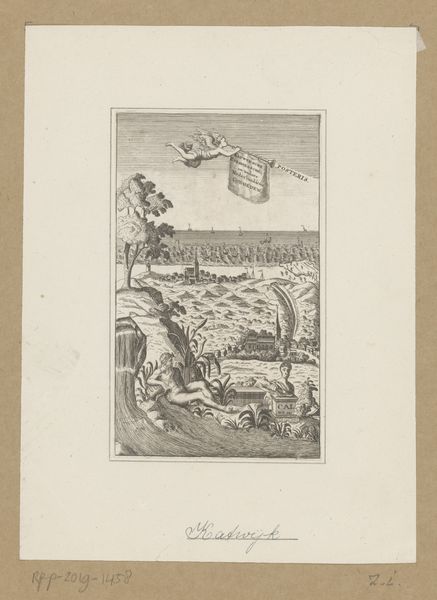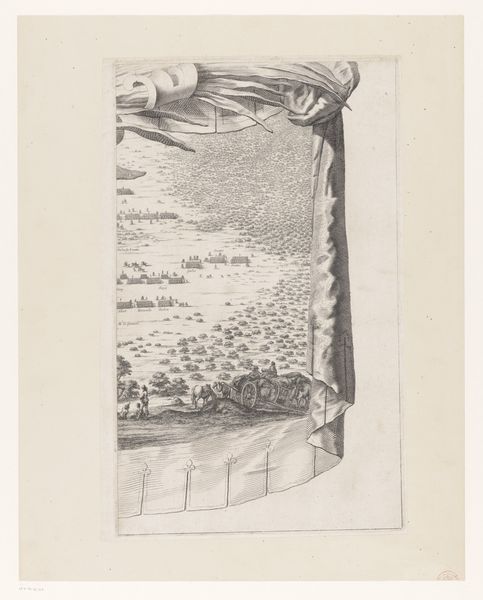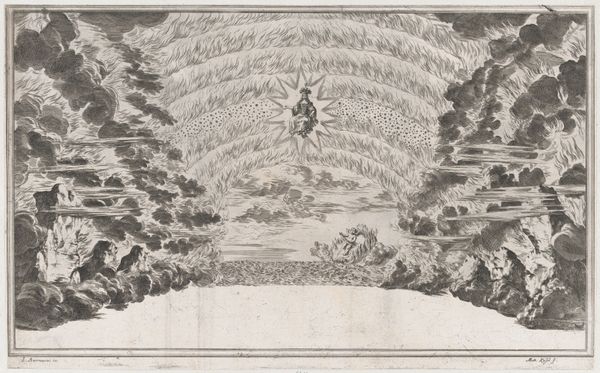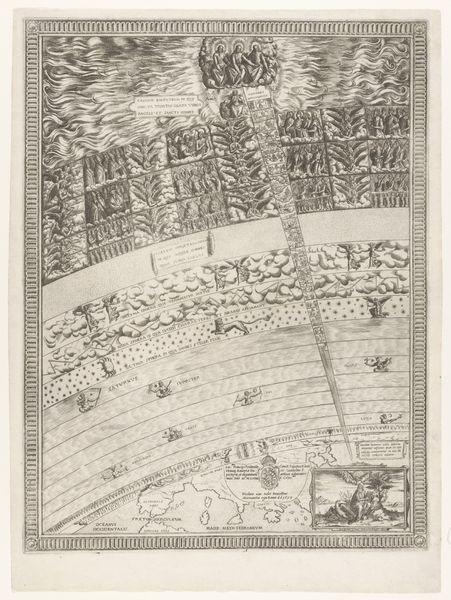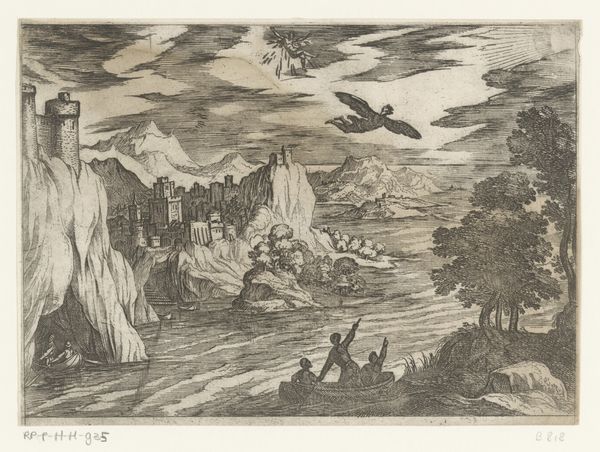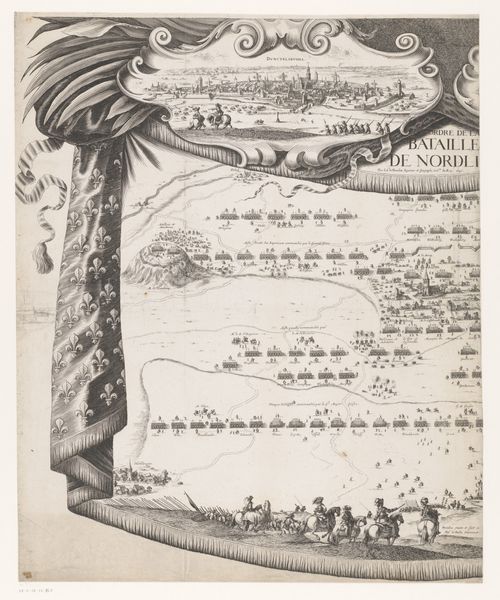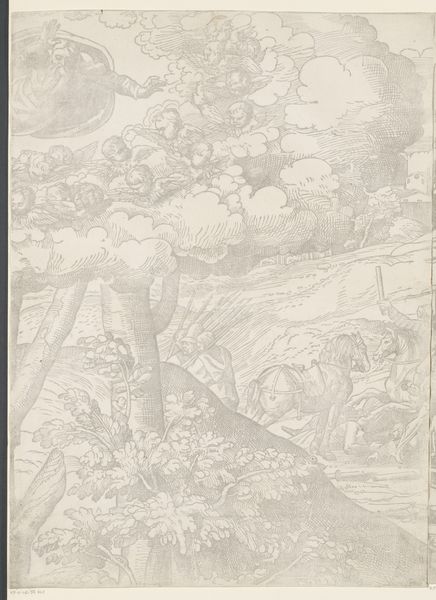
print, engraving
#
baroque
# print
#
landscape
#
cityscape
#
history-painting
#
engraving
Dimensions: height 592 mm, width 452 mm
Copyright: Rijks Museum: Open Domain
Editor: Here we have Nicolas Cochin’s print, "Slag bij Fribourg (linkerdeel)", made sometime between 1644 and 1686. It’s a highly detailed engraving. I'm immediately struck by its almost cartographic quality; the way the landscape is depicted is really interesting. How do you interpret the symbols in this work? Curator: Notice how the map-like depiction blends with the drama of a historical narrative. Battles, especially successful ones, were often rendered not just as events, but as symbolic territories claimed. What do you see in the very act of mapping a battle? Editor: It’s like claiming ownership, almost a visual conquest? Like, ‘We were here, we won here.’ Curator: Precisely! The strategic arrangement of troops isn't just about warfare; it's about asserting control over space and, by extension, time and memory. Consider the fleur-de-lis, subtly framing the scene. What does that evoke? Editor: Royalty, French power, a claim to authority...It’s interesting how even the folds of fabric become part of that assertion. Curator: Absolutely. These aren't mere embellishments; they’re visual cues, steeped in cultural significance. Think about how these images reinforced the power of the monarchy. What stories were they telling, and who were they designed to impress? Editor: So it’s less about the actual battle and more about constructing a certain image of power? I hadn’t considered how deeply embedded symbols could be in what seems like a straightforward historical depiction. Curator: The lines between history, propaganda, and art often blur. This print is a powerful example of how symbols work to shape our understanding of events and solidify cultural memory.
Comments
No comments
Be the first to comment and join the conversation on the ultimate creative platform.
